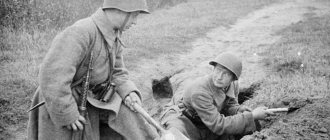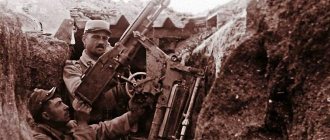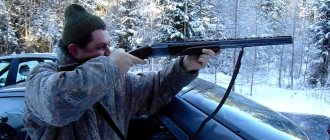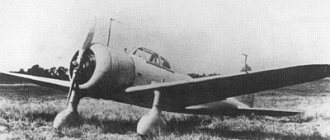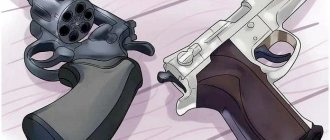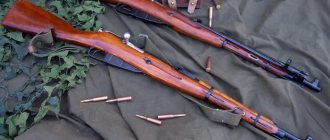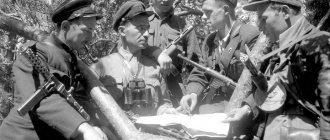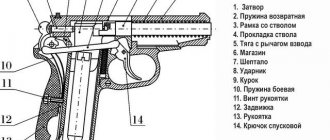Sapper blade: combat cross, post and tires.
Good day, Soldiers! Before I begin my chronicle of the sapper's shovel, I'll digress a little. Once upon a time, about thirty years ago, all hand-to-hand fighters in our country admired the resourcefulness of the Asian race, whose representatives, as we know, managed to use many household items as weapons.
And such things as various benches, brooms, axes, pitchforks, shovels, devices for processing wheat, have become so firmly established in the weapons range of many combat systems of the East that they are already mandatory for study.
[ad#1]
Fortunately, in our time, such admiration for China and Japan as authorities in the field of martial arts has greatly declined. And it is clearly visible that the “yellow race” is not unique in this regard, since in the history of all nations there is a similar tendency to use a thing for other purposes than its intended purpose. And the sapper shovel is no exception here - you just need to pay attention to its possible uses.
Article navigation:1. A brief history of the sapper shovel... How it appeared, where it was used. 2. Some examples of combat use of a sapper blade. ...Protection against direct impact with a sapper's shovel. ...Protection against impact from a sapper's shovel from above. ...Protection against impact with a sapper blade diagonally from the outside. ...Protection against impact with a sapper blade diagonally from the side. ...Protection against a horizontal blow with a sapper's shovel, carried out backhand. 3. Accelerated development of military equipment. 4. A simulator for practicing combat techniques with a sapper blade. 5. Articles summary.
A sapper shovel is a variant of a regular shovel, used for the needs of the army and changed its main purpose, thanks to the soldier’s ingenuity. At first it was called “infantry” because it was intended for the actions of foot “soldiers” and at that time had a direct purpose: to dig, dig and dig again.
Over time, the functions of the sapper's shovel have expanded significantly... Actually, digging the ground, then it can be used as a cleaver, an ax, a lever, a fulcrum for an oar, a measuring instrument (it is 50 cm), and as a throwing weapon. Nowadays, due to the advent of new materials, the functions of the sapper shovel have expanded even more and now it has begun to resemble a sort of multifunctional Swiss knife. For example, a sapper blade is often equipped with additional elements, for example, a saw that cannot be cut due to the concavity of the profile, a protractor, a nail puller, and even a ruler division.
Also, in our time, some companies, domestic ones at that, produce sapper blades from armored steel, which allows it not only to easily cut nails and even small metal corners, but also... protects against a pistol shot, like a TT.
But here there can be incidents... If a bullet suddenly hits a sapper's blade while it is being worn, then from a strong blow, it digs into the soldier's body with a sharp edge, causing a wound. That is, this situation is reminiscent of armored helmets for special forces, which can easily withstand the impact of a bullet, but... when the bullet hits the helmet, the impact throws the head back and the second bullet easily hits the open throat.
In short, in our time, a small sareur blade has become a mandatory companion for every soldier and has even begun to spread among civilians among those who call themselves “hand-to-hand combatants” and are often included in the list of mandatory types of weapons to study, along with a knife and a stick, like this available in SK, Unibos and other applied combat schools.
A brief history of the sapper shovel... How it appeared, where it was used.
Actually, the history of the sapper's shovel is relatively young compared to the same knife or ax, the use of which is equal to the history of humanity itself. The sarör blade was first introduced into the standard equipment of the Russian army during the last Russian-Turkish war and this was due to the increased development of firearms, as a result of which it was necessary to look for ways to quickly get out of the situation.
Of course, there was no question of retreat, and therefore it was necessary to be able to quickly consolidate the front line and this was done by burying it in the ground. And since it is extremely inconvenient to carry a standard shovel with you, and even to dig under enemy fire, a shortened version of it was developed, a kind of “cut-off shotgun,” thanks to which it became possible to “dig in” while lying down. This time is considered the birthday of such a specific and interesting type of entrenching tool as a sapper blade.
Its main purpose was engineering work such as small self-digging, full-scale digging of trenches, overcoming obstacles, and so on. In general, an entrenching tool (a small infantry shovel, a small ax and a small pick-hoe) can be considered an analogue of the standard weapons of medieval knights, with the difference that in our time a soldier does not have a squire and has to carry everything alone on his own hump.
Of course, the human brain is very inventive: since in the last century the share of hand-to-hand combat was disproportionately higher than in our time, and it was not always necessary to dig the ground with a sapper's shovel, it began to be used not only for excavation work, but also for cutting off the heads of adversaries.
And in fact, why carry any additional weapons with you when a spatula has a powerful stopping effect no less than a samurai sword? One leg is grunting in half, the other is grunting in half. By the way, it’s just an excellent special effect for an action movie, capable of surpassing “The Matrix”: the main character, masterfully working with a sapper blade, famously deflects all the bullets from enemy machine guns. Who will film such a spectacular scene?
Hand-to-hand combat using a sapper shovel, and even more so, mutual combat, is a truly terrible thing, and many soldiers after such a collision had a specific mental shift! Just imagine for a second: a perfectly sharpened tool, specially designed for digging in almost any soil, is thrust into the throat or stomach in a big way, completely interrupting and cutting it... Liters of blood in all directions, intestines dragging meters along the ground, a rolling enemy with terrible wheezing...
This is completely different from modern wars, when the territory is first cleared from the air with missile strikes, and when there is nothing left there, soldiers calmly occupy the territory.
In short, over time, the sapper's shovel found many uses other than digging ditches, and its use as a weapon (which, in fact, is what attracts hand-to-hand combatants in our time) came in the First World War due to an acute shortage of firearms . And it was used in battle in a confined space such as a “trench”, “trench” and other underground communications.
The fact is that the First World War, in addition to many features, was characterized by stable battle fronts with deep defenses over quite long periods of time. It automatically follows from this that in the occupied territories there was a high density of troops and a developed system of engineering structures. And very often the attacks ended “hand-to-hand” with the use of special equipment such as “edged weapons”: bayonets, knives, axes... And sapper blades too.
It was during the First World War that, as a result of soldiers' ingenuity, modified sapper blades appeared, sharpened on three sides, trench knives made of thick wire with an average diameter of five millimeters, the purpose of which was to pierce thick army clothing with a butt blow, and even small clubs.
Many of these inventions were forgotten, some began to be used again, such as the carrying of small clubs in the bosom of “civilians”. But the use of a sapper blade in hand-to-hand combat received almost official recognition and even began to develop in the form of the creation of various kinds of specialized combat complexes, which from my point of view is complete stupidity, because this is ... “an excellent way to kill a “living understanding of technology” and feeling weapons."
Some options for combat use of a sapper blade.
Before I outline the basics of working with a sapper shovel, I would like to cite excerpts from one “manual” devoted to the actions of a soldier against a person armed with it. The main feature of this instruction is that everything here is based on the use of the attacker’s inertia, or more precisely, when he can no longer cope with the inertia of the blow carried out by the blade. Therefore, all defensive combinations resemble a kind of military aikido and all defensive combinations end with a throw of the enemy when they let him pass by.
In counterattacks, a regular blow or arm lock is used, i.e., such interesting and quick-to-perform actions as twisting are simply unknown. And one more interesting point that I would like to draw attention to. I have written many times about the principle of “Absolute Excellence”, which is expressed in adhering to the principle of “Free Reach” and the enormous advantage that it gives. So, analyze the given pictures and try to determine whether the attacker is working at this distance or not.
Protection against direct impact from a sapper blade.
1. We take a fighting stance and, controlling the distance, wait for the moment the attack begins and develops.
2. Noticing the beginning of the attack, step with your right foot and leave the trajectory with a deep slope forward to the right. Simultaneously with this action, grab the left wrist of the enemy’s armed hand.
3. While maintaining the same tempo and rhythm, you should turn around sharply and, moving into a left-sided stance, sharply pull out the captured limb and deliver a direct blow to the head with the fist of the other hand.
4. Throw using the rear step. In this case, it is necessary to hold the enemy’s armed hand against the body so that the shoulder blade is behind the back.
5. Next, a blow to the head.
6. Next, bend the armed limb over the thigh and strike the head with a shoulder blade.
Protection against impact from a sapper blade from above.
1. Take the starting position and, controlling the distance to the enemy, wait for the moment of the opening of hostilities.
2. With a quick left step towards the enemy, reduce the distance and perform a defense with crossed forearms up so that the right hand is on top. Having turned your torso 90 degrees to the right, thus leaving the attack trajectory, grab the enemy’s armed wrist with your right hand.
3. Cleverly using the opponent’s inertia and in no way weakening the grip and without losing momentum, deliver a counter blow with your knee to the opponent’s stomach.
4. After carrying it out, turn to the right in the direction of the enemy’s main movement and throw him to the ground.
5. Using your knee as a fulcrum, bend and twist the grabbed arm, thus achieving a painful effect.
6. Disarming.
Protection against impact from a sapper blade diagonally from the outside.
1. As usual. We take a combat position and wait for the attack to begin to develop.
2. Step right forward and to the right, i.e., in the direction of movement, get out of the way of the blow.
3. Turning 90 degrees into a stance and grabbing the wrist of the enemy’s armed hand with the left, we perform an inward defense with the right, thereby blocking the enemy’s shoulder.
4. Using the inertia of the armed blade, the opponent’s hands, take it away from the trajectory below, thereby weakening the attacking movement and press it with the forearm to the body so that the weapon is behind the back. Use your right hand to deliver a boxing punch to the head.
5. Controlling the position of the shoulder blade with a wrist grip, apply the rear step.
6. Having hyperextended the armed arm through your own knee, we deliver another blow to the head.
7. Next, taking away the shoulder blade.
Protection against impact from a sapper blade diagonally from the side.
1. Standard situation, similar to the previous ones.
2-3. Having caught the optimal moment to begin executing your actions, step out of the path of the blow with your right hand and grab the wrist of your armed hand.
4. Continuing to turn around, strike the enemy’s neck with the inside of the right palm.
5. Strongly stretching the arm with the shoulder blade behind the back, and grabbing the shoulder with the right hand, we twist our torso, performing the “front step” throw. The armed hand is pressed firmly against the thigh or body in order to control it.
6. Strongly bending the armed arm over the knee, using it as a support. A blow to the head should also be carried out immediately.
7. Disarming.
Protection against horizontal blow of a sapper's blade, carried out backhand.
1. Having taken a fighting stance, we wait for a favorable moment to begin defensive actions.
2. Having dodged back from the movement, we seize the moment to carry out a counterattack.
3. Step left forward and left and immediately twisting your body, get out of the way of the blow and take the position of the right-sided stance, block your hand with two forearms at once.
4. Having shifted the right hand, we use it to grab the armed hand, and strike backhand with the other fist.
5. Without removing the hand that carried out the blow, we grab the hair on the enemy’s head with it and strike with our left foot in the lower part of the thigh.
6. We put him on his back and strongly bend the armed arm over our thigh, applying a painful hold. The left hand is strangling.
Pay attention to one important point, which suggests that the developers of this manual are real “armchair rats” who did not quite understand the realities of real combat. A person is always recommended to wait for the attack to begin, that is, he must always follow the lead of the enemy, who is free in his actions. Another feature of this “combat” complex: there is not even a mention of breaking something to the enemy: everything is limited to painful ones.
This is not a high-speed battle, but a maneuverable, athletic one, exactly like samurai fights: one is waiting for the other to attack. That is, this set of defenses against attacks is not truly combative.
Accelerated development of military equipment.
The art of using a sapper shovel is based on the following elements.
1. Ability to move.
An absolutely universal skill, needed everywhere: with or without a weapon, in everyday life, or in war. It is based on combining short movements in one or two steps according to the “wind rose” scheme in various ways: sliding, jumping, dashing, etc. As far as your imagination goes. There may or may not be a weapon in your hands. In general, the work is “live” and not rigidly fixed in the manner of a kata.
You stand in the center of the conventional “eight directions” figure, lower your center of gravity (it is advisable to be “a head lower”), lean a little forward and begin to practice steps in free combinations. When moving, imagine that the figure moves with you and you are always in its center. Movement is carried out exclusively along the rays of the figure. Also, work out as many ways as possible to turn at an angle that is a multiple of 45 degrees.
2. Interceptions and transfers.
This technique is akin to interdigital knife grips, as well as juggling a pole in a circus. And although this technique is almost never used in combat due to its slowness, nevertheless, it is necessary to learn how to deftly manipulate the weapon, performing various interceptions and transfers in order to take the necessary position, more quickly get used to the weapon, and also to develop its feeling .
3. Building the structure of the body.
Strictly speaking, there is nothing overly complicated here and the point here is that, for example, when jabbing blows, the hand should be optimally aligned so that it does not break under any blows and there is no discomfort felt in it.
Of course, the matter is not limited to this: it is necessary to learn to work holistically with the body, which, by the way, does not equate to working with the whole body “to fall in the direction of the blow,” but there is an educated ability to gradually connect the muscles of the body to work in the right direction and building the skeletal structure in such a way that the force was not lost, interrupted or dissipated along the way, passing through the body from the earth into the weapon. This skill belongs to the fundamental skills of martial art in general and you can read more about it here.
4. Various ways to strengthen the blows.
Here, I think, everything is clear even without “deciphering”, but a small explanation still needs to be given in order for the brain to work in the required direction.
Taking the spatula in your hand, make several swing strokes with it, for example, from top to bottom. Now answer the question: “How can you make it stronger?” Lowering the center of gravity, using the second hand, slightly tilting the body forward, jumping and lowering to the ground, psycho (emotion, if anyone doesn’t understand), as well as preliminary spinning in the joints of the body, energy (if you have it), playing the center of gravity when shifting from your feet on the leg and in other ways. And all these methods can be used for one single blow!
The question may arise: “Is there nothing better to do than to pervert all this? Wouldn’t it be enough to choose one method and call it a day?” This can be answered as follows: “If you work with a limited set of strengthening methods, then high-speed work will never be achieved, and even more so, a person will never understand the laws of body movement in battle.”
5. Work on a “living target”, taking into account the principle of “Free Touch”.
Don’t be afraid, I don’t encourage you to run around hot places and spill your heads left and right in the style of Musashi Muyamoto. These are simply sparring sessions with each other, carried out on mock-ups of sapper shovels at a slow and medium pace with the aim of detailed study of possible combat situations with their further awareness and development of the most optimal methods of counteraction.
6. A set of auxiliary punches and kicks.
This is the minimum set of blows, without which there is absolutely nothing to do in hand-to-hand combat, and especially in martial art. Having set blows with your limbs and being able to use them is necessary for a variety of work in battle, attacking various levels and thereby forcing the enemy to be distracted from performing his “main task,” which, of course, is “raising a nerd,” that is, you. I’ll explain these blows here I won’t imply that the material is extensive - just keep it in mind.
Having set blows with your limbs and being able to use them is necessary for a variety of work in battle, attacking various levels and thereby forcing the enemy to be distracted from performing his “main task,” which, of course, is “raising a nerd,” that is, you. I’ll explain these blows here I won’t imply that the material is extensive - just keep it in mind.
7. Psychophysical exercises to get used to the sapper blade.
Everything is simple here. You take a blade with your partner and start making noise like “blade to blade” or “flat to flat” with them: rumble, clinking of metal, and so on. Another way is that you take the spatula more comfortably and begin to make various movements near your own body: scraping, poking, chopping. In this way, you not only psychophysically get used to the weapon, but also constantly concentrate on the subject, and also develop a “sense of the blade.” And you can come up with a lot of such exercises, which, among other things, contributes to the development of creativity and interest in training.
8. Non-standard application.
The fact is that the weapon itself, its very appearance, blade, etc. immediately automatically forms a stereotype of its use. If it is an ax, then they will use it exclusively to chop. If it’s a knife, then cut and stab. If it is a stick, then only swing strikes. Accordingly, a person becomes a slave to weapons, his arsenal is sharply reduced, and the actions themselves become easily predictable.
So, in order for such a phenomenon not to happen, even at the very early stages of mastering a weapon, in this case, a sapper blade, it is necessary to concentrate on diverse techniques, for which a weapon must be used. It is necessary to be able to use it to carry out imbalances, pain, fractures, and so on.
Let's move now to the center: work on the petals and eight directions.
This eight includes all possible methods of attack and defense. In many ways, the work resembles knife work. And you can polish it endlessly, constantly discovering some new points and expanding the range of its application. All chopping blows with a sapper blade calmly fit into a figure of eight directions, which, in turn, easily fits into a figure reminiscent of an eight-petaled flower. Plus a poke strike, which is a kind of center of this eight.
And lastly, very important. As you noticed, at the bottom of the picture there is a phrase: “Work on the physical level and the “Aing” level.” I told you what kind of psychotechnics this is when I first created the blog. This state simply must be mastered, if only because it is a kind of pinnacle of visualization. You will not be able to distinguish the created world from the real one, only in it everything will be subject to the control of the brain.
In our case, you will be able to calmly work in this state of defeat and absolutely all experiences will be indistinguishable from the real world, which will greatly help you develop the necessary skills for combat and get used to cutting up a person.
If you learn all the components of this table, then the lessons might look something like this. Intercepting the weapon, stepping forward and pushing forward. Or a terrible force of a chopping movement from top to bottom with the blade of a “sapper”, intercepting it with a reverse grip and a movement reminiscent of a ripping movement with a knife from the outside to the inside. Here's another combination: a double figure-eight movement to the left, to the right, a turn and a circular kick.
There can be dozens of such combinations using a sapper blade, and the most important thing here is not to get hung up on some of your favorite ones, but to constantly come up with new ones, using changes in levels, interceptions and transfers from hand to hand, some elements juggling, etc. You can make the shoulder blade itself heavier, then the strength of your arms plus grip strength will also develop.
A simulator for practicing combat techniques with a sapper shovel.
And now to the title of the article: sapper shovel, combat cross, pillar and tires. Everything is clear about the shoulder blade, the “combat cross” has variants of attacking blows arising from the “eight”, “post and tires” - this is the main simulator that needs to be built, because any other, store-bought one, will fail by the end of the first training session.
A pole is dug or hung. Tires are thrown over it or otherwise attached, and a simulator for practicing powerful blows is ready. The only thing is that you need to take care of the reliability of the blade itself so that it does not fall apart during training and does not fly off in your direction.
The articles are a short summary. 1. Nowadays, the sapper blade has become an obligatory companion not only for the soldier and has even begun to spread among those who call themselves “hand-to-hand combatants” and is often included in the list of types of weapons required to study, along with a knife, stick, pole and nunchucks.
2. In principle, a sapper blade can help a person finally get off the couch and start training, because after making a few movements with it, the general psychophysical background of a person changes and changes significantly. Moreover, you begin to get a kind of perverted pleasure from this kind of fencing techniques.
3. In addition, its wide blade correctly develops the trajectory and direction of movement of the blade, and the sapper blade itself “as a whole” improves the ability to correctly line up the fighter’s body in space, thus allowing him to carry out his attacks with maximum force.
Dear readers of the blog “Master of Battle”! If you would like to subscribe to new articles, you can do so below:
Subscribe.
Sapper shovel for self-defense? Is it possible or not?!
Some self-defense experts, having read this far, will immediately exclaim: author dislike! There is no sapper blade, there is a small infantry blade! To be honest, the author does not see a big problem in calling the blade in one word: “sapper”, instead of two “1st small and 2nd infantry”, especially since the name has long stuck. It’s immediately clear to anyone what we’re talking about. And say: small infantry, and there are already a lot of questions. Like, why small? Is there a big one? Etc. The same goes for triggers, fuses and clips.
Author believes that lightness is important in popular entertainment literature. Lightness, gentlemen, lightness and humor! By the way, this also applies to comments. When stuffy intellectuals, authors and commentators look like those very “Ilyich’s eaglets” at every step. Remember the nursery rhyme?
I asked Uncle Fedya: Why is the car moving? Uncle Fedya rubbed his forehead and said: “She has a motor.” I corrected Uncle Fedya: “Not at hers, but at hers.” Uncle Fedya was offended: “Oh, you bitch, oh my!” Just in case, I took a piece of brick in my hand and answered: “I’m not a bitch. I am Ilyich’s little eaglet!”
However, let's return to our sapper small infantry blade. Can it be used for self-defense or not?
Sapper shovel for self-defense
Let's ask the question differently: is it possible to carry (keep at home and carry in the car) a spatula, so that there are no claims from the law, and in case of emergency, use it as a means of self-defense?
Yes, a spatula, like any household equipment, can be carried, stored, and transported; this is not prohibited by law. If a policeman or traffic cop stops you and sees you have a shovel, you can always say: I’m going to hide the body, what’s wrong with that, I’ve been doing this for a long time. Well, and, of course, this will be enough to satisfy the most curious law enforcement officer. (Joke). You can and should always find something to say. Those who do not know how to communicate with the police on the streets communicate with them in police stations, according to their rules. And this is not always good for health. So, let’s repeat: a sapper’s shovel can be carried anywhere and quite legally, except for protected objects with their own internal rules of passage .
But self-defense is more difficult . Neither a knife, nor an ax, nor a piece of brick from the nursery rhyme about Uncle Fedya, nor this shovel, from the point of view of the law and the court, are INTENDED for self-defense. Although they can be used as a means of self-defense in a state of emergency. The law provides very specific things for self-defense: a pepper spray, a traumatic gun, a gas pistol and a stun gun (see 150-FZ “On Weapons”). How effective they are is another matter, but that’s a completely different story. By the way, civilian long-barreled firearms are also directly intended for self-defense, if you received them specifically as a self-defense weapon, without the right to carry them. There are no infantry blades in the law. And therefore, in the case of using a small sapper shovel... ugh, an infantry shovel, of course... the law will most likely be on the side of the attacker! How so?
A simple example . Let's say you got into a serious fight with someone, and your opponent moved from insults to threats and active actions. You have a spatula with you. You realized that you can’t take them out hand-to-hand, and it doesn’t seem like a boy to run away. And you decided to realize your self-defense potential with the help of a means at hand, that is, the same shovel. Or simply scare him so that the attacker leaves you behind, but for some reason he is not afraid, continues the attack, and also promises to shove this spatula into your head... And you hit him in the head with a spatula. What will happen? You will sit down with a 99% probability. Even if there is evidence in your favor and surveillance camera footage that clearly shows that it was not you who were attacked, but you.
Simply put, if such a huge big man rushes at you, and you chop him with this shovel, and that unfortunate thing sticks his fins together, you will have to try very hard to prove that the necessary defense is not exceeded or is absolutely necessary. And don't think that they won't find you. How can they find it? Cameras, a lot of witnesses, cellular billing, now this is not a problem. In addition, the percentage of acquittals in Russia, and especially in self-defense cases, is negligible.
No doubt, you were actually defending yourself, fearing for your life. However, the court will reason something like this. There was only one attacker, the first one did not hit you with a shovel. Where is the proportionality of the threat here? No. Where is the urgent need? I do not have it either. During the time it took you to remove the shovel from where you were wearing it or from inside the car, that’s a lot of time and effort! – you could run away, hide or call for help. But you reached for the spatula. And perhaps they themselves provoked the attack in order to use it. So you prepared in advance. And if your shoulder blade was also sharpened along the edge, as some self-defense experts advise, then Article 105 of the Criminal Code of the Russian Federation is for you. Well, or, at worst, Article 111, Part 1, if the victim... ugh, the attacker, of course! will remain alive.
What is good in war (where this whole topic with the shovel came from), in peaceful life can, at best, result in Article 108 of the Criminal Code of the Russian Federation, Part 1 “Murder committed when exceeding the limits of necessary defense.”
There's one more thing to remember. Surveillance cameras mainly show a picture that is beneficial not to you, but to the investigation, that’s how they work . And if they show a picture that is not beneficial to the investigation, then the records may turn out to be unreadable or lost. Witnesses may forget everything or change their testimony exactly the opposite. And this happens not only in cases with shovels, knives and bricks, but also in cases with injuries, and with pepper sprays, which, as mentioned above, seem to be directly recommended as a weapon of self-defense. And you yourself, having received a dozen shock shocks to your balls, will sign almost any paper. Especially if it turns out that you were attacked not by the simple Russian Vasya Pupkin, but by some respected person, but this is not certain.
So what happens, is it better to immediately forget even to think about any kind of self-defense? Well, maybe then you won't be hurt too badly. Just think, well, they’ll break your ribs, take away all your money, documents and iPhone, and they’ll only let your girlfriend go around once. All this can be experienced. A hospital is better than a prison and certainly better than a morgue. And if, God forbid, you still decide to defend yourself, then Google in advance how to enter the hut correctly. So, what?
The author is entirely in favor of a person protecting himself and his loved ones in ANY AVAILABLE WAY, if necessary. For example, in case of a group attack or an attack on you with a weapon. That is, when they REALLY want to kill you. All means are good here, even illegal ones, because there is a chance to get out of prison, but not a single one from the grave. It’s just that some means are easier to justify from a legal point of view, while others are more difficult or even almost impossible. But using them to send a person to the next world is easy.
Few people know how to work with improvised means in such a way as to fight back without killing or inflicting serious bodily harm. All this needs to be really trained, but now only 10-15% of people are capable of doing something seriously. For the rest, it’s easier to watch a couple of videos on YouTube...
If you remember, the question was: is it possible to use a small infantry blade for self-defense? Everything that has been said above leads to the answer: you can wear it without restrictions, but it is better to refrain from using it, unless you are a “master of controlled violence.” And you definitely shouldn’t tell the police that you carried the spatula for self-defense. This is the path to the bunk. Moreover, 90% of domestic conflicts are not worth it. There is no talk about life and death, there is a stupid bull between two morons, as a result of which one goes to the hospital or morgue, and the other goes to the cops.
Of course, not all conflicts are like this, and not all of them can be resolved with words. But for these cases there is a properly selected pepper spray. Or a good injury that allows you to run to a real gun with real, and not traumatic, cartridges, if that very urgent need really arrives. Here the probability of imprisonment is already approximately 50%, especially with a good lawyer and financial support from friends, and to win back 49% from the mistress is, you know, very good for Russia.
However, this is the author’s personal opinion and it, of course, will differ from the opinion of some readers. If you can justify your different point of view, as he did, write in the comments.
Grigory Lisovsky | READY TO SURVIVE
Part 1 HistoryWhen and how did the MPL appear? The small infantry shovel was invented by the Danish officer Mads Johan Buch Linnemann (1830-1889). He received his higher military education on October 26, 1849, and in 1864 participated in the Alse War (Danish-Prussian War) as a company commander. At the front, he invented a multifunctional shovel. It could be used as a frying pan, a knife, and, of course, as an entrenching tool. Linnemann was presented to the captain in 1867, and in 1869 his invention was patented, and the shovel, much simplified, was introduced into service with the Danish army in 1870. But only 256 entrenching tools were produced per battalion, i.e. only every third person received a shovel. In 1871, Linnemann traveled to Vienna, where he began producing an Austrian version of the shovel. For the Russian Imperial Army, 60,000 pieces were ordered for 30,000 rubles.
A shovel with the mark “patent of Captain Linnemann” In which army did they first begin to deliberately use it for hand-to-hand combat? Even in the Russian-Turkish wars, Russian soldiers used entrenching tools for hand-to-hand combat. This became a more widespread phenomenon during the First World War. One of the first mentions in literature of a small infantry shovel as a weapon can be found in the famous novel by E.M. Remarque. “No Change on the Western Front”: “...Now a new fashion has begun to go on the attack: some take with them only hand grenades and a shovel. A sharpened shovel is a lighter and more versatile weapon; it can not only be used to poke from below, under the chin, but first of all, it can be used to chop with a backhand. The blow turns out to be more weighty, especially if it is applied from the side, at an angle, between the shoulder and neck; then you can easily cut a person right up to the chest.”
Stills from the film All Quiet On The Western Front, 1930. The experience of the front-line soldiers of the First World War was taken into account by the military leaders of the Workers' and Peasants' Red Army. Appropriate programs were developed, and army instructors of the Red Army began to train recruits in hand-to-hand combat not only with a rifle with a bayonet, but also using an entrenching tool. This was reflected in various instructions for the Red Army, and in publications in popular scientific literature.
Magazine “Technology for Youth” No. 5, 1941. Did the spatula have any competitors? During the First World War, for hand-to-hand combat, along with a small infantry shovel, all kinds of trench knives, clubs, and brass knuckles were used, from homemade specimens to industrially manufactured weapons.
A club is easier to use in combat than a spatula. The blade must be clearly oriented with the edge of the tray towards the point of impact, and if the enemy is wearing protective armor and a helmet, dexterity and skill are required to hit an unprotected area of the body. The baton takes with its weight. This explains the huge assortment of all kinds of clubs in the First World War. However, it is necessary to note a very important nuance. A spatula is a soldier’s standard weapon; it is always at hand and multifunctional. The range of its applications is from digging earth and frying pans, to oars and armored shields, and it is also a very good help in hand-to-hand combat. The club is purely utilitarian. Of course, in a trench war, when the front stood still for months, a heavy club could be stored in a dugout and used from time to time. But in World War II, when troops were deployed over considerable distances, no one agreed to carry the extra weight. Therefore, the shoulder blade on the soldier’s belt won “natural selection.” Is there a Russian (Soviet) school of fighting with a sapper blade, or do all armies of the world use the same principles? If so, what are its differences? All schools of fighting with a shovel are approximately the same. They proceed from the natural logic of using a shovel in hand-to-hand combat on the battlefield. If we look at any manual on hand-to-hand combat during the war period (USSR, Germany, England, etc.), we will see universal stances and approximately the same set of simple but effective techniques and movements. These techniques were taken away by life itself on the fronts of two great world wars. However, in modern schools of hand-to-hand combat we can see some differences. For example, in the 80s, instructors of the Airborne Forces of the German Democratic Republic (GDR) used karate techniques to work with a shovel.
Page 269. Techniques with MPL, based on karate techniques. by Frank Pelny GJOGSUL Militärischer Nahkampf in der NVA If we talk about NATO countries, they currently use a three-section small folding paddle with a wide triangular handle. Due to the design feature, when using a spatula in hand-to-hand combat, a soldier must hold it with both hands. As a result, the combat stance becomes frontal. Accordingly, the coordination of the soldier’s movement deteriorates. This is how US Marines are taught to hold a spatula. The Russian school of hand-to-hand combat is the heir to the magnificent school of the USSR, and in my opinion, is the most optimal. This school is based on a whole fusion of combat styles: bayonet fencing, saber fencing, SAMBO, boxing. Are there any documented hand-to-hand fights using MPL? I think that we will not find photos of hand-to-hand combat in any archive of any country. We can find a photo before the melee, or after it. Imagine: there is a hand-to-hand fight to the death. Screams, screams, moans, people are pierced with bayonets, chopped with spatulas, and in the midst of all this horror, a photographer runs with a “watering can” and takes photographs. Assess his chances of getting out of this dump unscathed. I think they are equal to zero. This explains the absence of real, rather than staged, photographs of hand-to-hand combat. But we can still get an idea of hand-to-hand combat with a spatula. World cinema will help us here. In my video “A Brief Historical Review of the Small Infantry Shovel” (see at the beginning) from 06 m 20 s to 6 m 42 s there is an excerpt from the film “All Quiet on the Western Front.” This is a film from 1930: it stars actors who went through the crucible of the Great War. In my opinion, twenty-two seconds from this film perfectly illustrate what hand-to-hand combat with a small shovel is. Of course, the actors hit the blades flat so as not to injure their colleagues, but this passage certainly conveys some impression. What options for using MPL in combination with other weapons exist?
A German soldier after a street hand-to-hand fight in Sevastopol. There are not many options for such combinations, but they exist. The most common combination: gun and spatula, or knife and spatula. Remarque describes hand grenades and a spatula. Such combinations are determined by functional necessity. For example, assault units first threw hand grenades into sections of the trenches in a certain sequence, and then burst into the trenches and finished off all living things. If it was necessary to clear a dugout, they first threw a grenade, and then fought with a pistol in one hand and a knife or spatula in the other hand. Here is an excerpt from Paul Karel’s book “Eastern Front”, book one “Hitler Goes East”: “The attackers cleared every meter of the path with shovels. At the same time, at any moment an enemy could appear to the right, left, in front or behind. The situation forced Lüttwitz to develop an original method of warfare. This is how Schaub describes it: “The lead company made its way through the deep snow on both sides of the road to the nearest village and, acting as an assault unit, attacked the enemy in narrow, deep formations. The attack began with concentrated mortar fire. Then the main weapon became hand grenades or, in hand-to-hand combat, an entrenching tool.” The spatula can be combined with any item that can be used as a weapon. There is also a fighting technique with two shovels at the same time. At seminars I demonstrate the work of a spatula with a tarpaulin cover, or a spatula and a knife, as well as a stick, a jacket, etc. Why has the MPL become a kind of symbol of a soldier in Russia? Remember the common poster from the USSR times “A shovel is a soldier’s friend”? So, she really is a friend.
Here, for example, is the recollection of front-line soldier A.D. Volkova: “But the engineer’s shovel deserves special attention! What is not praised in poems, songs, films with a military theme: tobacco, a glass, mail, etc. It is immediately clear that these singers did not even smell front-line gunpowder. The most worthy of praise is the sapper's shovel! A soldier can throw away a pot, a spoon, even a rifle, the bayonet of which he threw away long ago, but only death will separate him from the spatula. The spatula saves soldiers not only in close combat. After all, this is an ax, a knife, a frying pan and other countless uses... We must pay tribute: most of the blades are made of good steel. Only those made in a hurry did not have one of the edges of the shovel sharpened at the factory. But the soldier will still imprison himself. And then he sharpens it so that the blade not only chops, but cuts well, and some even shave with it! But you have to fry with it carefully! Don't let her lose her temper. Horse meat needs to be cooked for a very long time, but you can quickly fry it on a shovel. After all, it’s rare to come across telegraph wire to fry kebab on. You could use a bayonet, but it’s thrown away: extra weight... You can talk a lot about the shoulder blade. She should have a monument erected.” The rest of the memories of front-line soldiers about the small infantry shoulder blade can be read here: https://zhab.livejournal.com/208006.html It must be said that the shoulder blade was generally one of the symbols of the First World War. I would like to show a shovel from my collection, where a commemorative engraving was made in memory of the 1914 war. “In memory of our heroes who died in the trenches”
Any infantryman of any army knows that this simple tool is truly a friend that will save his life during shelling.
So the shoulder blade is really a symbol of a soldier, as important as a machine gun or a rifle. Comments (0) | Print | | Complaint
Source:
https://topwar.ru/81725-sapernaya-lopatka-dlya-gorodskoy-samozaschity-chast-1.html
